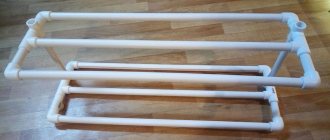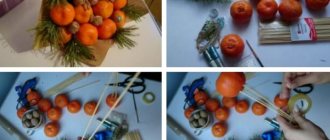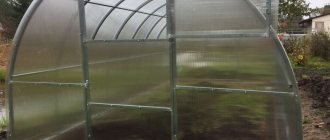If you are the owner of a plot of land, then at least once you have been faced with the need to dig holes for supports and pillars when decorating the appearance of the territory. Sometimes it happens that a hole is needed in a not very convenient place. It is quite difficult to cope with this task with a simple shovel. You can, of course, borrow a hand drill from a friend or call a specialist who can handle the appropriate tool. But if you plan to carry out such work from time to time, then you can make a garden drill for poles with your own hands from scrap materials.
The tool will be easy to use and compact, which is very convenient for storage. Typically, hard metal is used for such work. With its help, you can split plant rhizomes and small stones into pieces. Such a device will allow you to dig a hole by rotating the equipment around an axis like a corkscrew.
Selection of cutting part
The main purpose of the drill is to dig holes. Wells are made with a cutting part, which can have different shapes, namely:
- half-disc shape;
- type of auger;
- two-blade;
- helical;
- removable;
- multi-tiered;
- whole.
If you want to make a pole drill with your own hands, you must determine the design features of the device. Some models have small blades at the bottom, while at the top they increase to larger sizes. By purchasing a factory drill, you will receive an effective and functional tool for use. But it is not always possible to insert it into the soil to the required depth; in addition, the nozzles of such devices may not have the correct diameter.
Handle and its features
To make a handle, you will need a piece of pipe approximately 40 cm long. Select a diameter such that when you wrap your hand around it, it will be comfortable for you to hold it.
Before attaching the handle, squeeze the top edge of the bar in a vice to give it an oval shape. Weld the handle perpendicular to the rod.
The most important part in a drill is the knives. Their design will determine how much labor can be required to make holes in the ground. The material from which they will be made must be hard and elastic.
Modifications of garden augers
For harder soils, a garden auger is useless. Therefore, the design can be modified. To do this, it is necessary to install several rows of cutting parts on the rod. Immediately after the tip, a blade of the smallest diameter is installed. Stepping a few centimeters to the side, larger blades are mounted. There can be no more than 4 such rows. The diameter of the largest blade should not exceed 50 cm, otherwise it will be very difficult to work.
If you need to make a drill for poles with your own hands, then this is an ideal option. The design is very light and easy to work with.
If you need to make a hole for poles of small diameter, then the work looks something like this: make a few turns with a drill, pull it out and throw away the earth stuck between the blades. But if you need to make deep holes, then the work will be long and hard. Therefore, a container for collecting soil is welded on top of the structure. If you can’t come up with modifications yourself, you can use drawings.
Necessary materials
The base of the structure is a pipe. The diameter should not exceed 5 cm. If you use a profiled pipe, then its cross-section should be 20x20 or 30x30 cm.
Blade knives can be made from various materials using:
- steel sheets 4 mm;
- cutting disc from a saw of the required diameter.
The last option is more convenient and practical for production, since the cutting part is already ready. The disk must be cut in the middle and attached to the pipe. It is also better to sharpen the side parts. So, the disk will cut the ground better when drilling.
The tip can be made in different shapes. You can simply sharpen a metal rod and attach it to a pipe, or make a spear-shaped tip from a strip of steel. Or you can combine both options.
Recommendations for the manufacture of individual parts
Before you start making a pole drill with your own hands, you must understand the components of this tool, among them the following should be highlighted:
- baking powder;
- soil receiver;
- shaper plow;
- screw.
The baking powder consists of two planes or a screw. The latter is similar to a spiral; in this unit the knife is located on a rod. There is also a soil receiver in the drill. Soil is collected here, which makes it easier to drill holes with a diameter of up to 35 cm. When making a drill for posts with your own hands, you will need to equip it with a shaper, which will be located in the lower part. This unit allows you to strengthen the columnar foundation, which is required when constructing large buildings.
Designs and Applications
There are three main designs of earth drills:
- Garden. Usually these are two semicircular blades welded at an angle to one another. A hand drill of this design is used to organize holes for planting plants, which is why it is called “garden”. But the same tool is used to make holes when installing posts for fences, gazebos and other light buildings.
An example of a homemade earthen garden auger
Auger drill. It differs in that it has a longer cutting part. It is used for the same purposes - to make holes for pillars. Due to its design - a longer cutting part - it needs to be removed less often, so drilling usually goes faster.
The auger drill is distinguished by spirally wound several turns of the spiral
Drill for TISE piles. This design is similar to a garden auger, but has an additional folding blade to form the expansion at the bottom of the pile characteristic of this type of foundation.
Folding blade - features of the TISE pile drill
Preparation of materials
If you decide to make a drill for poles with your own hands, then at the first stage you need to start preparing everything you need. Among the details it is worth highlighting:
- nut;
- drill;
- vice;
- pieces of metal pipe.
You will also need an M 20 bolt. You need to take 2 disks with a diameter of 100 to 150 mm. As for the drill, it must have a tip with a diameter of 20 mm. A metal pipe will lie at the base. You will need two sections of 500 mm and one of 400 mm. It is better to take a pipe with a wall thickness of 3.5 mm and an outer diameter of 40 mm. With these parameters, the finished product will be durable and will be able to withstand hard ground.
Handle and its features
To make a handle, you will need a piece of pipe approximately 40 cm long. Select a diameter such that when you wrap your hand around it, it will be comfortable for you to hold it.
Before attaching the handle, squeeze the top edge of the bar in a vice to give it an oval shape. Weld the handle perpendicular to the rod.
A drill for posts made from a circular saw #diy #do it yourself #drill #with your own hands
The most important part in a drill is the knives. Their design will determine how much labor can be required to make holes in the ground. The material from which they will be made must be hard and elastic.
Preparing tools
You can borrow the discs from a regular circular saw or make them yourself. To do this, you should find 3mm sheets of metal. Among the tools that will be needed in the work are:
- angle grinder;
- welding machine;
- metal drills;
- hammer;
- drill.
If you do not have a tip with a drill, you can replace it with a drill with a shank that looks like a cone. Its diameter must match the screw. In order to prevent injury, you should use soft bicycle handles.
Step-by-step work
If you decide to make a manual post drill with your own hands, draw a circle with a center on a metal sheet. This part will be the blade. The circle is cut out with a grinder, after which a cutting line should be drawn along the diameter line. At the next stage, you need to draw a cutout line that will correspond to the circumference of the collar. The disk is divided into two parts, after which a hole for the knob should be cut. At the end of the pipe, which will serve as a wrench, four longitudinal lines must be made with an angle grinder. These are formed into a point using a hammer. In this case, you need to make cuts at the very center of the pipe.
The tip is processed by welding. The driver should not become clogged with soil during operation. When making a drill for fence posts with your own hands, in the next step you will need to connect the disk to the collar using a weld. This is done at a distance of 5 cm between them. It is necessary to maintain the angle of the plane of rotation, which is 20˚.
What types are there?
If you decide to buy a drill, you need to consider the main varieties and determine the features of each of them. Select according to your goals, take into account the frequency of use, the required diameter of the pits, as well as their depth. The main options are:
- Two-blade cutter with cross handle. A simple, reliable design, it is convenient for making holes for trees, other plants, and fence posts. All elements are fixed to a durable pipe; there is no possibility to change the cutters, so if they are damaged or worn out, the tool is replaced with a new one. Price from 500 rubles.
- Plate version with replaceable blades. The main advantage is the ability to quickly change cutters for different pit sizes. You need to unscrew the two bolts and set the desired size, do not forget to tighten the fasteners firmly. You can buy replacement elements separately if one is damaged or you need to make a hole with a large diameter. The price starts from 1000 rubles.
- Garden auger drill. Instead of plates, a screw auger is attached to the pipe; it is about 20 cm long or occupies the entire height of the rod. It is much more convenient to make deep holes with this design; it immediately throws the soil to the surface of the earth, and does not need to be constantly removed for cleaning. It is best used for erecting fences or digging holes for a columnar foundation. The cost starts from 1500 rubles.
The products are produced both in the form of a regular rod with a handle, and with extensions to increase the drilling depth. Elements for extensions are sold separately, it is convenient, you can buy as many as you need. The price starts from 300 rubles for a product about a meter long, it all depends on the model and workmanship.
There are not only manual designs; if you buy a drill for constant work, it is better to choose the option with a drive to simplify the process. There are many models, they are divided into several main groups:
- Stationary mechanisms with a gasoline engine. Most often, this is a small stand on wheels or tracks; it does not need to be carried in your hands and is easy to move from place to place. The working part is placed on a rod or attached to a suspended structure. You can also make deep holes; the equipment is often used for wells.
- Mobile drills with gasoline engine. They are made in the form of a structure with a small motor, like a chainsaw. There are always two handles on top to hold the equipment. It is convenient to work, but it requires strength, it is difficult to carry the equipment and keep it strictly vertical during the drilling process. It is convenient to carry out work at a distance from buildings; no communications are needed.
- Electric options. Use only where there is a possibility of connecting to the network, or carry a mobile generator with you. They operate silently and are easy to use. If you don’t want to waste energy on manual drilling, then it is best to buy this variety, it is cheaper than its gasoline counterpart.
Select a tool taking into account the diameter of the holes, drilling depth, and frequency of use. There is no need to spend thousands of rubles on an electric or gasoline version, if it will sit in the pantry for years, it is wiser to opt for a manual drill for excavation work.
Working on an extension pipe
Next, you can begin working with the extension pipe. It must be equipped with a handle. This part is welded in the shape of the letter T. An amplifier in the form of a scarf is attached to it. The workpiece should be inserted into the driver, making a hole between these parts. This will allow you to fasten the parts with a pin. There should be several holes so that the length of the product can be adjusted. You can complete the work process by sharpening the blades. The edge of the cutter is processed so that when rotating the tip is directed downward.
Application of protective coating
Having made a drill from a pipe for poles with your own hands, you must protect it from external influences and premature aging of the material. This will prevent rust from occurring. The parts of a homemade drill are processed with sandpaper and coated with a primer. A phosphating solution is applied on top. The finished product after this treatment can be painted.
When using a tool, after each use it is usually disassembled and cleaned of dirt and dust. Particular attention should be paid to connections. They are coated with a special lubricant that helps repel water. You should not miss this moment, because proper care will be an excellent prevention of bolt jamming and will allow the equipment to operate uninterruptedly for a long time.
How to improve the tool
When making your own garden post auger, you can think about improving it. When drilling holes, you may encounter large rhizomes that lie tightly in the ground. Sharp edges make work easier. For ease of use, teeth should be cut on the sloping area of the blade or the cutting part should be rounded.
The design can be improved by adding removable cutters. They will allow you to drill holes of any diameter. In addition to the manufacture of spare parts, it is necessary to provide for their attachment to the collar. They are connected by two iron plates, fixed by welding. Two holes are drilled into the mounting plates and blades for the bolts. The cutters are fixed with M 6 bolts. The bolts may interfere during operation. To eliminate this problem, they are screwed in with the threads facing up.
If you want to make the best DIY post drill, you can improve it using one more method. To do this, a narrow metal plate is cut out and turned into a cone using a grinder. This will improve the efficiency of the lower end of the knob. The dimensions of the plate are 10 x 2 cm. As a result, you should get a kind of point. There is no need to make cuts in the collar. Metal plates are inserted into the end and secured by welding. They are flattened to form a peak.
If you want to use a pike, you can base it on a different method of making it. To do this, take a 17-centimeter metal plate, from which a screw similar to a corkscrew is cut out. The further algorithm of actions will be the same as in the first option.
If you decide to make a pole drill with your own hands, photos of such structures will allow you to understand which design to give preference to. If a screw is provided, a drill can play its role. It should be able to handle wood and metal. Such a tool will penetrate the soil more easily and will drill holes of the required depth.
If you are working with dense deep layers of soil, you can weld a small flat cutter between the cutter and the pick. This design will allow you to loosen the ground and center it when drilling. For such a part, you need two metal plates 3 x 8 cm. A trick of this kind will speed up the work with the tool.
When making a drill for installing pillars with your own hands, you can supplement it with cutters made from disks that are designed for working with stone. The circles are cut along the radius, and the hole widens in the center. It must match the diameter of the knob. Bending the disk allows you to get something like a screw or a corkscrew. This part will only need to be welded using the algorithm described above.
The cutter can be made from a circular saw blade. The teeth will cope with rhizomes and hard soil. You can upgrade the tool at your discretion. But no matter how high-quality it is, before the drilling process it is better to loosen the soil with a shovel, then the device will penetrate the soil well and the work will go faster.
Auger drill
Due to the large number of turns, an auger auger creates significant resistance, that is, it is much more difficult to work with it than with a garden auger. But augers are used mainly in the presence of a mechanized drive - when making a drill for deep wells - for water, for installing underground probes for a heat pump, etc.
This is what an auger drill looks like
To make a homemade auger drill, you will need several metal disks. The number of disks is equal to the number of turns. The disks are cut identically, a hole is cut in them in the center for the rod, as well as an identical sector - so that they can be welded.
A sector is marked in the rings and cut out
The discs are welded on one side, then, slightly stretching the resulting accordion, the seam is welded on the other side. Rings are welded on the outer disks. The welded discs are placed on the rod, the lower edge is welded.
It turns out to be such a big spring
Next you will need a winch. The blank for the auger is secured, the winch hook clings to the ring and is stretched to the required length, after which the auger is boiled.
Almost done











